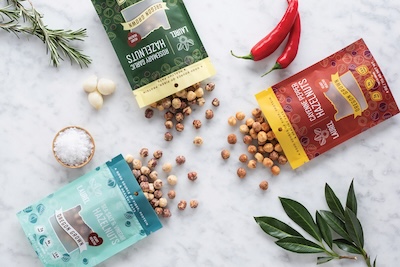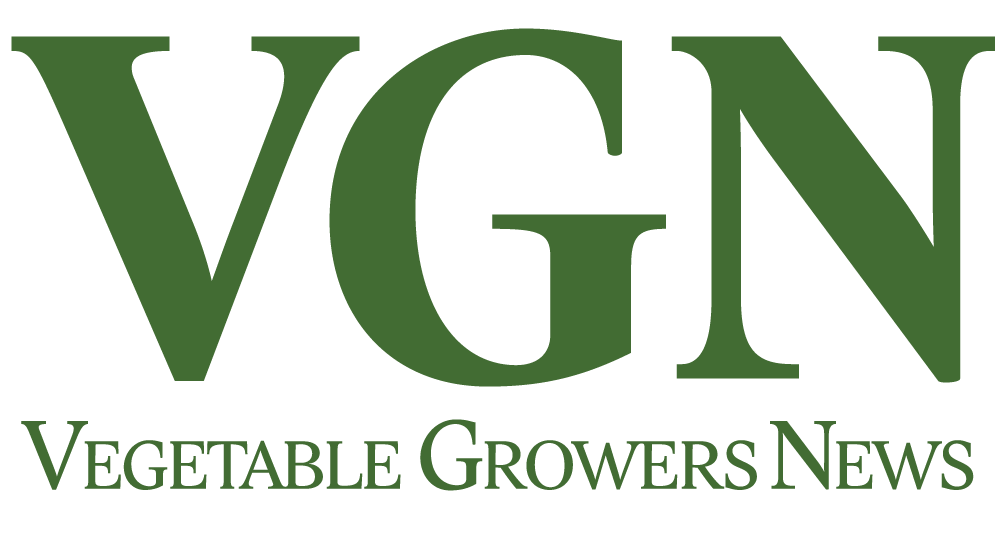
March/April 2025
Roots of tradition
Denfeld Nut began planting hazelnuts and walnuts in the 1950s on the Chehalem mountain range in Laurel, Oregon. Now, it is a grower, processor and value-add operation of high-quality nuts.
Seventh-generation descendants of the original grower still live and work on the family farm, which dates back to 1872.

“My grandfather got into washing, drying and aggregating crops for neighbors, and my dad scaled that more in the mid-’80s, but that was still pretty rudimentary. We washed, dried and prepared in-shell only for our own farms and maybe half a dozen neighbors,” said Sean Denfeld, owner of Denfeld Packing and co-owner of Laurel Foods, the value-added leg of Denfeld.
When Denfeld came on board in 2000, the family identified the processing component of the farm as an important element and grew its grower base from around six to 140 in 2025. The majority are family-owned and operated, similar to Denfeld Nut’s farm.
“We’ve had really good success in forging strong relationships, both on the procurement side and the customer side,” Denfeld said.
A changing landscape
The hazelnut industry has gone through a big transformation over the last two decades.
In 2007, Oregon State University’s breeding program released the first eastern filbert blight-resistant variety, aimed at solving a disease problem that had been prevalent since the 1970s.
“With this new variety that could withstand that disease pressure available to growers, as well as some fundamental shifts in grass-seed production and marketing, growers were looking to diversify,” Denfeld said.
Combined with the fact that the 20-year period leading up to 2007 saw some strong sales in the nut category, the industry expanded from 20,000 acres to nearly 100,000 acres today.
For Denfeld Nut, diversification has been key to success as it switched to a regenerative model.
“There are four main buckets between the growing, wash/dry, processing and value-add,” Denfeld said. “As those buckets go through their various market cycles, that diversification allows for continued success.”
Corey Burns, sourcing manager for Denfeld Nut, said that on the orchard side, there are seven different varieties being grown and going to different markets.

“As an industry, we’ve shifted our focus from in-shell production to very heavily in-kernel,” Burns said. “In-shell is still important to us, we’re still selling into some nice niche markets in Northeast Asia, Europe and more, but those markets have not been our primary focus.”
Kernel consumption, however, is on the rise, particularly in the U.S., and that’s where the company sees the future of its business.
Enhancing soil health
Denfeld Nut experimented with subterranean drip irrigation before it became commonplace among hazelnut growers, and became big advocates for mulching trimmings around 2012.
“We invested in some of our own technology and are big promoters of the benefits of chipping, as opposed to just pushing a brush and burning it on the edge of the orchard,” said Nic Reinhard, Laurel Foods’ general manager.
Denfeld Orchards also plants grass in between the rows of the orchards, which improves soil structure and increases organic matter as it grows and decomposes. This can lead to better soil aeration and water retention.
“There was a time when the idea of sustainability was viewed as a competitive edge, but we heavily promoted an industry-wide sustainability program,” Denfeld said. “We pushed hard to fund an industry-wide stewardship program modeled after the California Almond Board’s sustainability program.”
Because Oregon hazelnuts are inherently a soft crop with minimal insecticides, few pesticides and low water use, the idea was to show data to marketers the crop’s eco-friendly properties. That program now has enough data where it can legitimize the claims, Denfeld said.
“Within the next year, we’re going to see some really interesting facts about the whole industry,” he said.
Tech talk

On the processing side, some key production points involving tech brought maximized efficiencies, prevented injuries and improved final product quality.
“Optical sorting has been a huge must in the kernel production world,” Denfeld said. “Some of the new stuff in the last three years has allowed us to look for defects that are actually under the skin of the kernel that are not identifiable by the human eye. That has really helped us control the quality.”
For the value-added segment, the company recently invested in new packaging equipment that has eliminated repetitive practices and improved employee satisfaction.
On the orchard side, Burns said air blast systems allow for better penetration of the spray into the canopy of the hazelnut trees compared to conventional spraying methods. This improved coverage can lead to more effective treatment and reduced chemical usage. Tissue samples and soil samples are utilized to optimize plant nutrition uptake.
The road ahead
The value-added side of the business is the newest component of Denfeld Nut, and there will be more focus on that in the immediate future to keep the balance of the company’s diversification strong.
“We know the American consumer is one of the most exciting markets for us to target right here in our backyard,” Denfeld said. “Amid increasing shipping costs, fluctuating geopolitical challenges and limited consumer awareness of hazelnuts, the domestic market remains a dynamic area of opportunity and a primary focus.”









